15 Unusual Things People Around the World Eat
Some of us are unable to handle even the smell of shellfish, while others
find simple foods such as mushrooms revolting. Little do we realize that around
the world, people are constantly consuming things we would not even recognize as
food. Western and Eastern countries alike have their respective unusual dishes,
some that may even be worth trying one day.

Learn about a few of the world's
strangest delicacies and see what looks appetizing and what seems completely
unfathomable as food.
15) Fried Spiders
(Cambodia)
Fried chicken is a favorite food all over North America, but
other countries are willing to branch out in terms of frying ingredients. In
Cambodia, fried spiders peak the interests of locals and tourists alike.
Especially in Skuon, a town also known as "Spiderville" in the regional dialect,
vendors line the main plaza with baskets full of the unusual delicacies.
According to "Tuck into a Tarantula," by Rhymer Rigby, some other Cambodian
cities, such as Phnom Penh, also carry the delicacy on a much smaller scale. To
find an overwhelming amount of fried spiders, however, Phnom Penh will always be
the place to go.
Tourists Indulging in a Local Cambodian Delicacy - Fried Spiders:
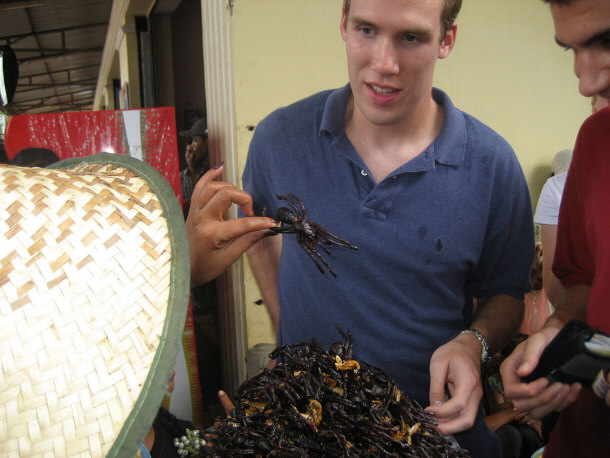
By Greg Walters from Eaton, United States [CC-BY-2.0],
via Wikimedia Commons
No one is completely sure of where the idea to fry spiders came from, but
according to "Lonely Planet Cambodia," Cambodian people resorted to foraging
desperately for new sources of food during the Khmer Rouge rule. Typically the
crispy legs are the prized body parts, but anyone is also welcome to try the
abdomen as well, if they are brave enough.
Fried Spiders For Sale at the Market in Skuon, Cambodia:
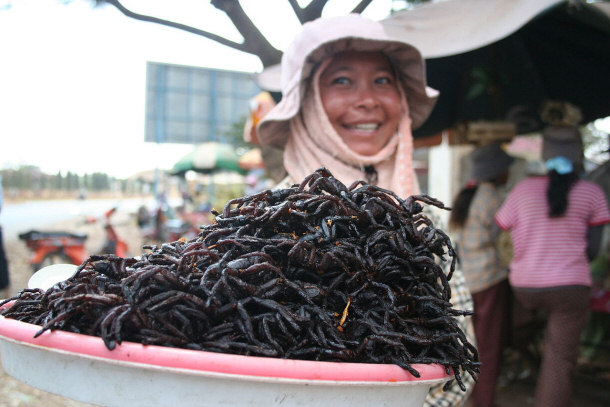
By Mat Connolley (Matnkat) (Own work) [GFDL, CC-BY-SA-3.0 or CC-BY-2.5],
via Wikimedia Commons
14) Kiviak
(Greenland)
Not only does this dish take months of preparation and quite a bit
of work to assemble, Kiviak puts the American turducken dish at Thanksgiving to
complete shame. Perhaps it is the dish that inspired the turducken (though not
likely). Kiviak is a Greenland specialty consisting of a whole seal, stuffed
with not 1, not 2, but 500 birds. The stuffed seal is buried underground for
about seven months, according to BBC, before it is pungent enough to consume.
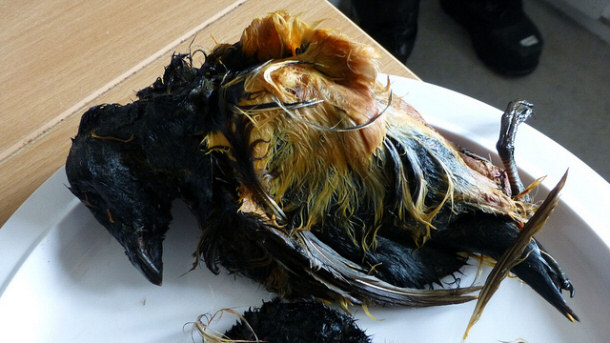
The stuffing birds are auks, small penguin-like birds that exist in many
species across Europe. Inuits remove as much air from the seal skin as they can,
then sew up the stuffed skin and slather grease on top to seal it. They place a
heavy rock on it while it is sitting, to avoid letting air in that might spoil
the delicious treat.
A Whole Seal???

Travel claims the dish is best dug up once the months-long
process has liquefied some of the insides. In the advent of more appetizing
food, this dish is no longer a popular wintertime treat in Greenland, but it
still does exist.
13) Silkworm Pupae
(Asia)
This one is a little difficult for most people to stomach.
Silkworms are well-known as an important species in Asia, because they produce
highly coveted silk threads. According to "Prehistoric Textiles" by E.J.W
Barber, the Chinese have been breeding these little creatures for over 5,000
years. Another less common use for the little silkworms is to consume them as
food in the pupa stage. Though it is not as popular as farming the worms for
silk, many different nationalities in Asia consider silkworm pupae to be
downright tasty.
Silkworm Pupae Arranged So Delicately on a Plate:
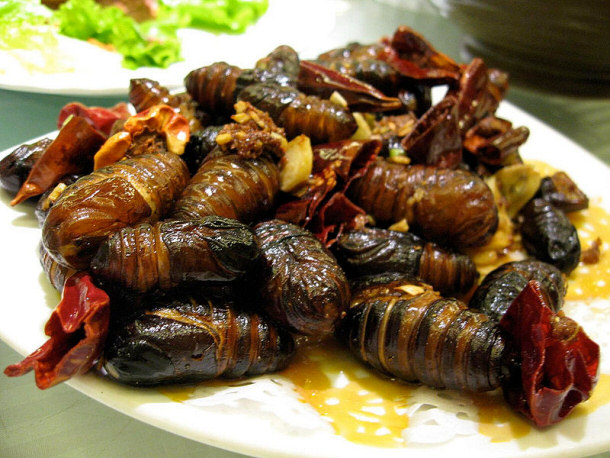
By Blueberry87
via Wikimedia Commons
Street vendors in China roast the worm pupae, while Indians boil the pupae to
retrieve silk and throw a few spices on the boiled worms to make them taste
better. ScienceNOW Daily News suggests that silkworms have been conversation
fodder as a food idea for astronauts on long-term space missions.
Canned Pupae:
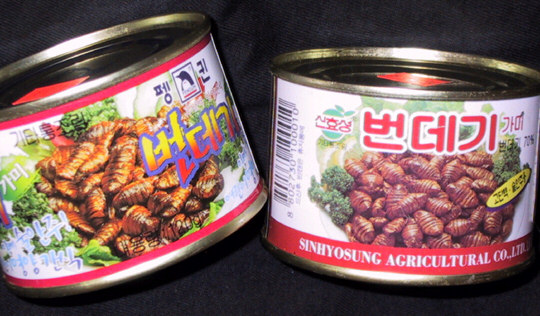
Despite the reported good taste, the rest of the world has not exactly been
requesting these pupae on their plates. The lack of worldwide popularity may be
due to the very bug-like appearance of the silkworm babies. While some larvae
can look like beans when cooked, silkworm pupae look distinctly like fat, juicy,
bugs. No taste is good enough to make up for the appearance, as far as many
travelers (even gourmets) go.
12) Escamoles
(Mexico)
The ants in Mexico can grow to rather discomforting sizes,
especially if they are Liometopum, or giant velvety ants. This holds true for
their larvae as well. Mexicans enjoy consuming Liometopum larvae, or escamoles,
in many dishes, especially tacos. The larva are like bulbous grains of long rice
with a cottage-cheese consistency.
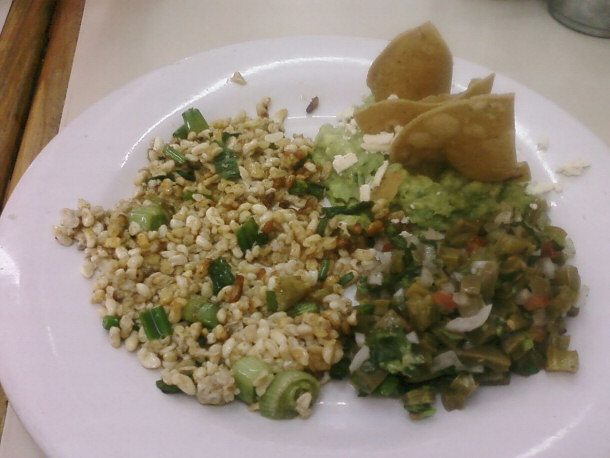
Perhaps more unusual than the fact that people will willingly eat bug larvae
is the fact that it reportedly tastes quite appetizing. Consumers have described a light, nutty, buttery flavor that
corresponds excellently with guacamole in tacos. The larvae can also be found in
cheeses, and they are highly coveted. These little guys are an interesting way
to react to a huge ant problem.
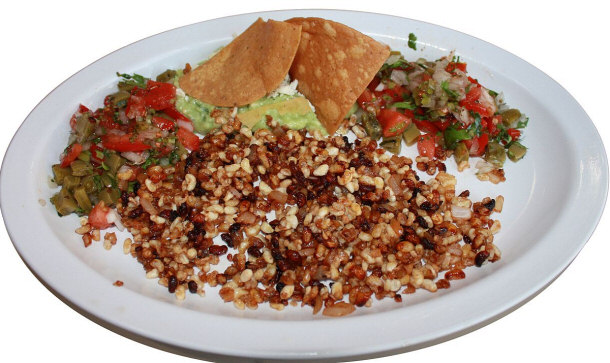
By Cvmontuy (Own work) [CC-BY-SA-3.0 or GFDL],
via Wikimedia Commons
Eat Your World attributes this delicacy to the Aztecs long ago, but it must
taste at least somewhat appetizing for the dish to have thrived for so many
centuries. Since the larvae look more like pine nuts, they are not as difficult
for the faint-of-heart to consume. Escamoles easily integrated themselves from a
tribal food into modern Hispanic cuisine. Many visitors have eaten this delicacy
on accident and will never even know. It is cheap enough that it can appear in
almost any Mexican dish. LA Weekly suggests that eating escamoles is far more
environmentally friendly and nutritious than the current foods we eat, such as
beef and pork. An escamole diet is invariably easier to sustain than an animal
diet, but the rest of the world seems unwilling to make the jump to giant ant
larvae as a diet staple.
11) Lutefisk
(Northern European)
Though the base of this Northern European dish is commonplace
whitefish, the delicacy grows much more unusual with the cooking process. First,
the whitefish is air-dried or salted to become stockfish or klippfisk. The fish
then soaks for several days in a mixture of cold water and lye before it is
ready to cook. Yes, the lye from grandma's old soap is part of the lutefisk
cooking process, according to the Appleton Post-Crescent. To get the lye out,
the fish is then soaked in water for another handful of days, then salted,
steam-cooked in a pan, and eaten.
Traditional Norwegian Lutefisk with Potato, Bacon and Mashed Peas:
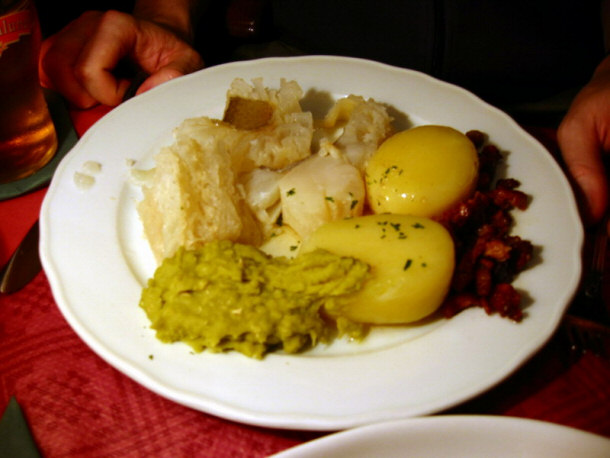
The Nordic people seem to have picked up on the bizarreness of this dish and
have come to embrace it as a cultural masterpiece. It is popular to make
newcomers try the dish at least once, and lutefisk's presence at the Christmas
table has recently become more and more popular, according to a Norwegian
article titled "Trendy med lutefisk."
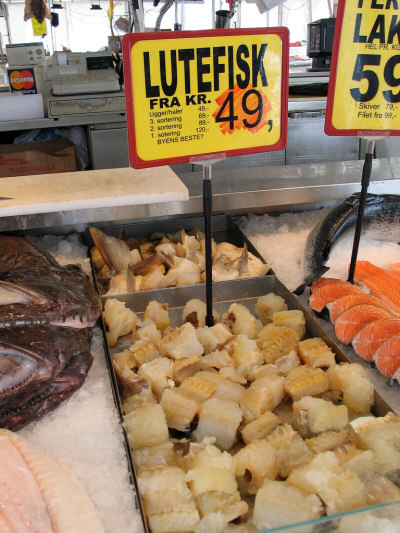
By Adam_D
via Wikimedia Commons
This is by no means an exotic dish, as it
has even spread to the more Nordic regions of the United States, such as
Minnesota. The self-proclaimed lutefisk world capital is in Madison, Minnesota.
Modern culture has written many jokes in dedication to this interesting Northern
dish with a jelly-like consistency and a highly memorable smell.
10) Tripe
(Mexico)
Though not uncommon, we still feel tripe deserves a spot in this
list of unusual foods. Tripe is a highly popular dish of cooked farm-animal
intestines. The bodily waste is washed off of the entrails, unless the tripe is
intended for dog food, in which case the green, smelly bile is left on,
according to Greentripe. Dressed tripe, or washed tripe, is the stuff found in
countless international dishes of great variety. The most nearby place where it
is popular is in Mexico, especially in a hominy-tripe soup called menudo.
Goat Tripe and Heats at an Open Air Market in Peru:
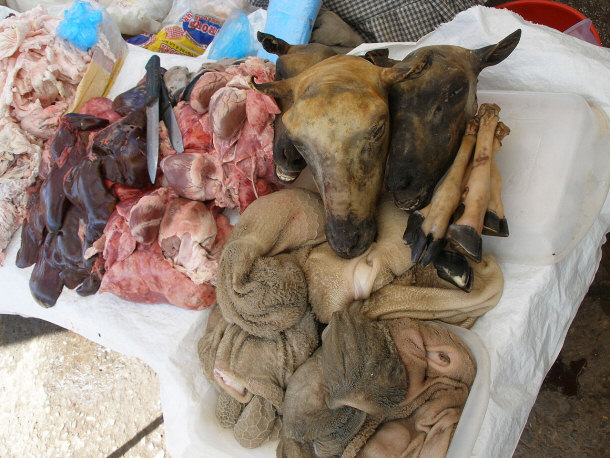
By quinet [CC-BY-2.0],
via Wikimedia Commons
The IFIS Dictionary of Food Science and Technology asserts that the
popularity of tripe peaked in Europe during the Victorian period and began to
ebb away in the latter 20th century. This was presumably due to economic
standing, as the dish was far more popular when better food was more difficult
to afford.
Tripe at a Market in Florence, Italy:
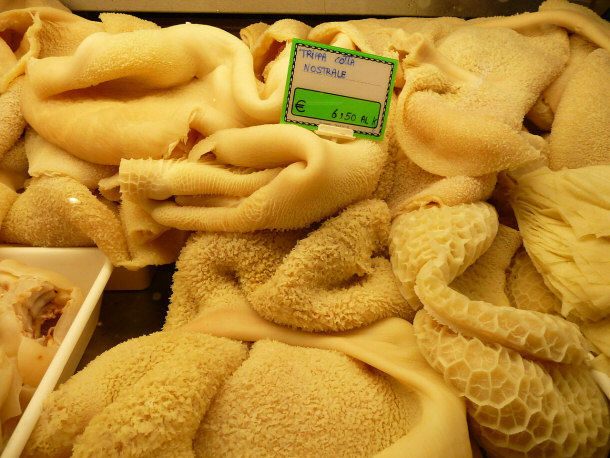
By Warburg (self-mad) [CC-BY-SA-3.0],
via Wikimedia Commons
Tripe was cheap and easy to cook, so people made due with it. Since
the rise of average European wealth in modern times, far fewer people turn to
tripe as food except to feed their dogs with it. It is still ubiquitous enough
in so many cuisines that it seems to warrant at least one try.
9) Vegemite
(Australia)
 The specialty from down under, vegemite is a very interesting
spread. When beer brewers construct beer, a byproduct left behind is yeast
extract. The Australians make use of this extract by turning it into a spread
for sandwiches, pastries, and anything a person could want some vegemite on.
Many people do not like it upon first try, and it is viewed as a somewhat
acquired taste. The specialty from down under, vegemite is a very interesting
spread. When beer brewers construct beer, a byproduct left behind is yeast
extract. The Australians make use of this extract by turning it into a spread
for sandwiches, pastries, and anything a person could want some vegemite on.
Many people do not like it upon first try, and it is viewed as a somewhat
acquired taste.
It reportedly tastes a little bitter and very salty with umami-rich
components. The paste is smooth and spreads easily onto toast or any other food.
Kraft wrote a story on vegemite, explaining that it was invented in 1922 to
compete with similar spreads in other British-influenced lands. Vegemite has run
into some controversy, as unexplained rumors of the substance being banned in
the U.S. and Denmark started popping up. U.S. Customs and Border Protection have
attempted to reiterate that vegemite is completely legal is still for sale,
though the rumored ban has almost become a legend at this point. Americans are
not particular fond of the stuff, anyway.
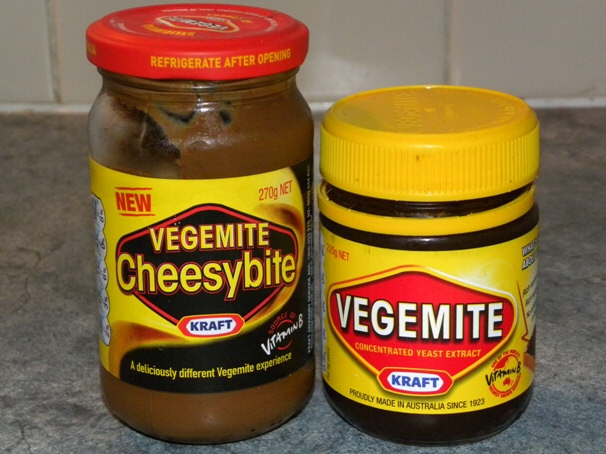
Vegemite is commonly mocked in popular culture, as the taste for it just does
not seem to travel over sees. Most memorable is the Men at Work track from 1981,
"Down Under" where they refer to eating a vegemite sandwich. Movies in Australia
often depict Americans trying the spread for the first time with unfavorable
reactions. Even President Obama has described Vegemite as "horrible" when
visiting a Virginia high school in 2011, according to CNN.
8) Tequila Worms
(everywhere)
Tequila worms are quite interesting, because they are not
actually a popular food item in Mexico. They are much more of a gimmick that has
become popular legend. Tequila worms are the larvae of Hypopta agavis that
resides on the agave plant. Tequila is made from these agave plants, and thus,
the worms are a common sight. The myth is that these worms are highly coveted,
and tequila served "con gusano" (meaning it has a worm in the liquor) is somehow
extra special.
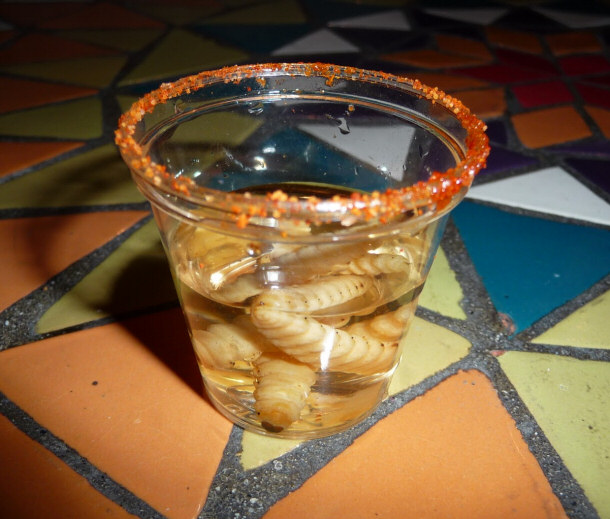
Unfortunately, this myth is much more of a marketing ploy for tourists than a
local tequila secret recipe. "Drinkology," by Walter James, explains that a worm
present on an agave plant is a sign of infestation and resultant low quality
tequila. The worm was not part of tequila bottling and marketing until the
1940s, when it became a popular gimmick for visitors from other countries.
Nonetheless, people do fall for it, and tequila worms have indeed made it onto
people's palettes.
Things like this are important to keep in mind when traveling. Many foods are
successful only because of tourists, while some foods only exist because of
tourists. Do research before eating anything too new to keep from being the butt
of a joke somewhere else. In case we do not find out in time, eating things like
tequila worms at least makes for good stories later on in life.
7) Birds' Nest Soup
(China)
The idea of eating a bird's nest may sound next to
impossible. Think of the twigs, the hair, the feathers, and the other random
trash birds may employ from their surroundings to construct a nest. In China,
however, there is a bird family called the Swiftlets whose nests are nothing
like what Westerners are accustomed to. When Swiftlet nests are cooked in water,
they dissolve into a gelatinous texture than many Chinese people enjoy in soups
and rice dishes. In Massimo Marcone's article, "Characterization of the edible
bird's nest the Caviar of the East," he explains that edible birds' nests are
highly coveted and can also be used to make an expensive birds' nest jelly.
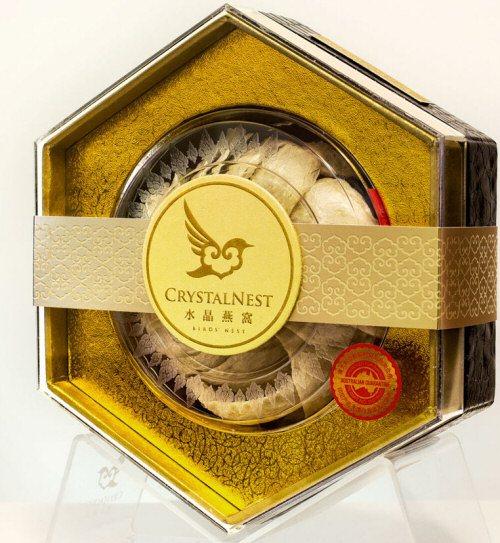
By Joe Ritson
via Wikimedia Commons
Male swiftlets construct the gelatinous nests in caves, and it takes them
just over a month to do so. The nests are high in essential nutrients, and the
Chinese believe them to be incredibly healthy and beneficial. People eat birds'
nests to improve focus, breathing, the immune system, and more, according to
Joseph Hobbs, who wrote "Problems in the harvest of edible birds’ nests in
Sarawak and Sabah, Malaysian Borneo". Due to the high demand for these nests,
they are now harvested in in a farming style with man-made nests, so that the
birds' natural environment is not completely ravaged.
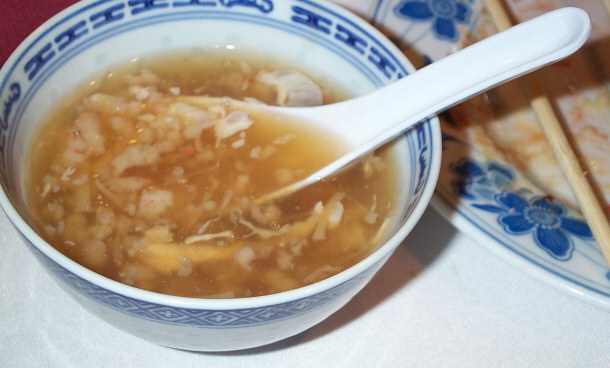
By GeeJo
via Wikimedia Commons
Edible birds' nests are also comparable to caviar in other countries because
of its pricey nature. One bowl can cost up to $100 USD in Hong Kong, according
to Hobbs and an article titled "Bird-nest Soup, Anyone?" Perhaps the health
benefits are worth the cost, as birds' nest soup is a national specialty and has
been for over 400 years.
6) Kopi Luwak
(Indonesia & Philippines)
Kopi Luwak is coffee with an extremely unusual twist. Like
people, a cat-like creature called the Asian Palm Civet also regularly consumes
coffee. It eats the beans whole, and then, unable to completely digest them,
excretes the beans whole inside their feces. These beans, apparently, make the
best coffee out there. Massimo Marcone's article, "In Bad Taste," details the
enzymes in a civet's digestion system that some how enhance the coffee beans'
flavor.
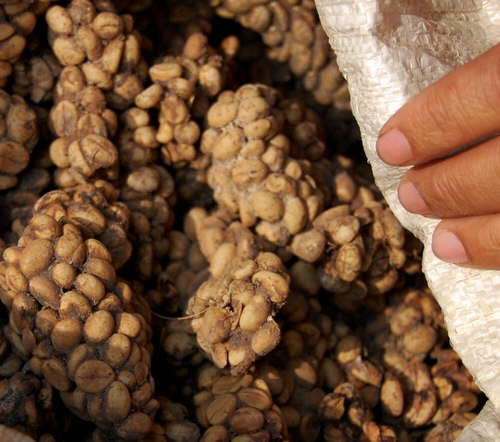
By Wibowo Djatmiko [GFDL or CC-BY-SA-3.0-2.5-2.0-1.0],
via Wikimedia Commons
The supposedly delicious coffee does not come without cost, however. A
kilogram of beans costs about $700, according to Forbes. Not only is it
expensive, TRAFFIC officers worry that the extensive trade of civets are
disrupting the current population all in the name of good coffee. Farming does
not seem to work, because without natural selection at play, the beans will be
of poorer quality. Whether the coffee is even tasty or not is still debated, as
the Specialty Coffee Association of America solidly agree that the kopi luwak
coffee taste plain terrible and exists for novelty purposes only. It may just be
an acquired taste.
Asian Palm Civet:
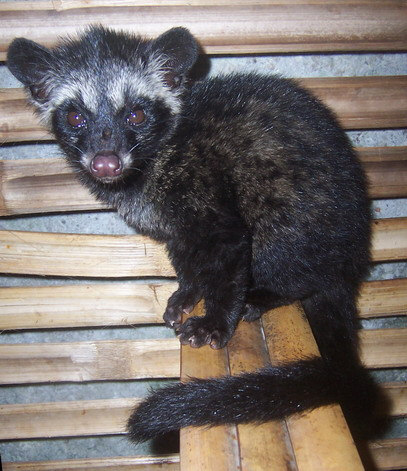
By W. Djatmiko
via Wikimedia Commons
Kopi luwak can most easily be found in Sumatra or Java (countries with huge
natural coffee bean supplies). People in the Philippines also gather the beans
in forests or produce them on farms in large quantities. The consumption of kopi
luwak goes back as far as Indonesian coffee bean history and has intrigued
outsiders since the Dutch came over in the 1800s. Ideally, the kopi luwak is
supposed to remove acidity and add smoothness and body to the coffee, but most
coffee experts agree that it tastes like, well, crap.
5) Casu Marzu
(Sardinia, Italy)
Cheese, anyone? Casu Marzu is a Sardinian sheep's cheese with
insect larvae living in it. The cheese fly larvae helps to further break down
the cheese into what most would call a decomposed state. The additional
digestion causes the cheese to liquefy and seep out. Some people remove the
larvae from the cheese right before they eat it, but those who choose not do
must watch out. The larvae can jump about half a foot, according to May
Barenbaum's "Ninety-Nine More Maggots, Mites, and Munchers ". ".
Casu Marzu Cheese:
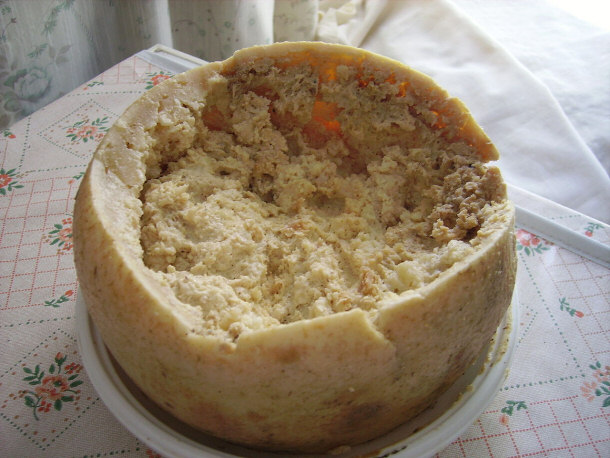
By Shardan (Own work) [CC-BY-SA-2.5],
via Wikimedia Commons
If someone is willing to handle the live maggots, he must hold his hand above
the cheese to avoid maggots jumping near his face or on his clothes. Those who
do not care for live maggots can place the cheese in a bag and wait for the
sound of the jumping maggots to subside, which means the maggots are no longer
alive, and the cheese will be still. Mark Frauenfelder's "Most Rotten Cheese"
explains various
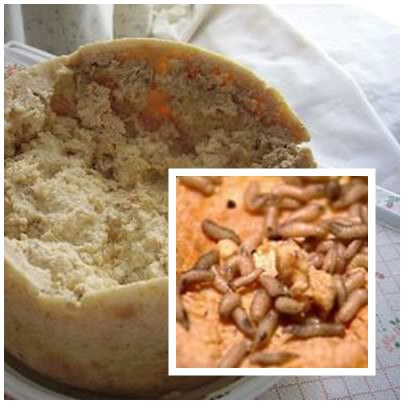 methods of consuming this strange delicacy. To create it, a
cheese fly is placed in a wheel of pecorino cheese and left outside. The fly can
lay over 500 eggs in one sitting, so that can really can a wheel of cheese
oozing, while she lays more eggs. A consumer can expect thousands of maggots to
be in just one wheel of Casu Marzu. methods of consuming this strange delicacy. To create it, a
cheese fly is placed in a wheel of pecorino cheese and left outside. The fly can
lay over 500 eggs in one sitting, so that can really can a wheel of cheese
oozing, while she lays more eggs. A consumer can expect thousands of maggots to
be in just one wheel of Casu Marzu.
The unease this cheese may cause outsiders has also occurred with Sardinian
health authorities. The cheese was even illegal for quite a while in Europe and
only obtainable through the black market. The ERSAT now details the proper
traditional method to prepare the cheese, so traditionalists can continue to
enjoy it. Because the cheese has existed for so long, authorities decided it
does not need to be held to current hygiene standards and can be eaten at the
consumer's risk.
4) Live Cobra Heart
(Vietnam)
Live hearts have carried an intrigue for centuries in
most countries. In modern times, live cobra hearts reign as an extremely popular
dish in Vietnam. When visiting, it is one of the most recommended dishes for
outsiders to try. What is especially interesting is the process that goes into
eating a snake heart. The customers must choose a reputable restaurant, where
the host will lead them to a room full of live animals of many varieties. Hungry
diners should pick out a fat looking snake. The host will pull out the chosen
snake and test it by poking it with a stick on the floor. If the snake proves to
be highly aggressive, then it will likely make for some very tasty food.

The snake is then decapitated and drained of its blood and venom for the
customer's drinking accompaniment. Matador Network explains that the heart will
be placed on a platter and served up to the most honored guest, which in most
cases is the outsider. It is meant to be swallowed whole and enjoyed with a shot
of blood and venom liquor. People often claim it tastes like chicken.
3) Century Eggs
(Many Places)
Despite the auspicious name, these eggs have a completely
opposing look and smell. It goes by other similar names, such as
thousand-year-old egg, millennium egg, preserved egg, and more.
Arranged Century Egg:
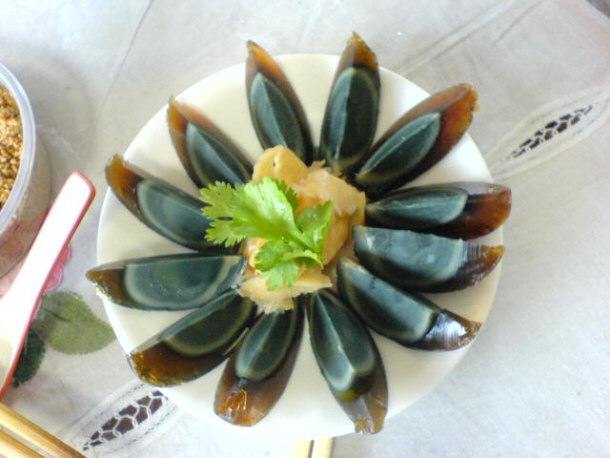
By irrationl_cat
via Wikimedia Commons
The Chinese take
quail, duck, or chicken eggs and place them in rice hulls also filled with
quicklime, ash, clay, and salt for an extended period of time. Depending on the
recipe, the eggs may sit for weeks or up to many months before they are ready,
according to BBC News.
Century Egg With Snowflake Patterns:
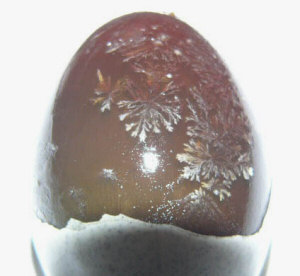
By WingkeeLEE
via Wikimedia Commons
These eggs are supposed to have a truly unique taste, and the smell is also
reportedly very distinct. A Chinese citizen who found eggs covered in slacked
lime discovered the egg recipe on accident. He immediately went to work trying
to recreate the newfound delicacy. There is an urban legend that horse urine is
part of the egg process, but Anne Marie Helmestein's article pertaining to the
subject says this is simply untrue. The myth probably arose from the distinct
smell the eggs give off. Horse Urine is essentially not acidic enough to produce
the effect create by quick lime.
Because quick lime is not exactly safe for human consumption, modern cooking
efforts have often replaced it with zinc oxide, an essential nutrient. Even too
much zinc can cause problems as well, though, so the process must still be
monitored very carefully.
2) Lengua
(Many Places)
Anyone who knows a little Latin or Spanish will recognize this
word and think of the tongue. Lengua is indeed cooked beef tongue. People
typically boil it, then remove the skin and serve it. Pickled tongue is also
popular because of its spicier taste. It can even be roasted like roast beef and
served up in a big ban with tongue gravy.

This dish sounds and looks interesting (or maybe even off putting), but it
tastes quite good. It is popularly consumed in Mexico, Western Europe, Eastern
Europe, and some Asian countries. Even northern North America serves it up at
fancy restaurants on toast sometimes. Try it with mushrooms and horseradish
sauce. Lengua is very high in fat according to Gourmet, which may have something
to do with its longstanding popularity. Epicurious offers a great recipe for
Tacos de Lengua, an extremely common Mexican dish.
Tacos de Lengua (Beef Tongue):
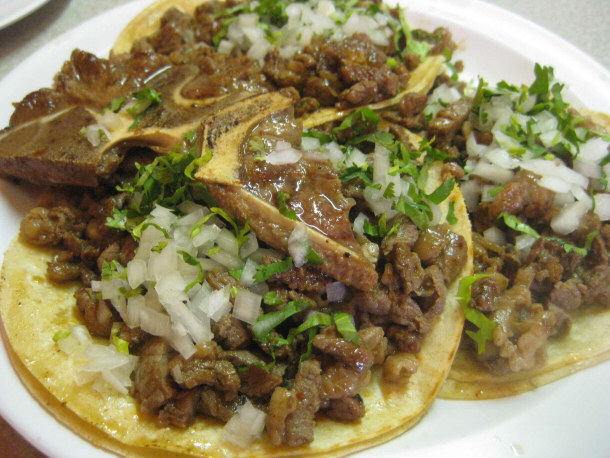
1) Puffer Fish
(Many Places)
This is a dish not only for the gourmet traveler but for the
braver souls out there. Next to poisonous frogs, puffer fish are the most
dangerous poisonous vertebrates out there. Either they must taste delicious, or
the challenge must excite people, because highly trained chefs in Asia are still
paid to prepare puffer fish to be eaten by hungry customers. In Japan, the
puffer fish dish is called fugu, while in China it is named hetun.

By Brocken Inaglory [GFDL or CC-BY-SA-3.0-2.5-2.0-1.0],
via Wikimedia Commons
Chefs must be extremely delicate and skilled to remove the right parts and
amount of edible fish from the dangerous parts. It seems to poison more people
when served as soup. The poison effects begin with tingling and end with
paralysis. Those who survive the first 24 hours of poisoning are typically in
the clear, though they may first have to wake up from a coma. "The Introduction to Food Toxicology " by Takayuki Shibamoto attributes the poison to the
intestines, though this is a topic subject to debate. " by Takayuki Shibamoto attributes the poison to the
intestines, though this is a topic subject to debate.
A Tray with 6 Pufferfish Species at Market:
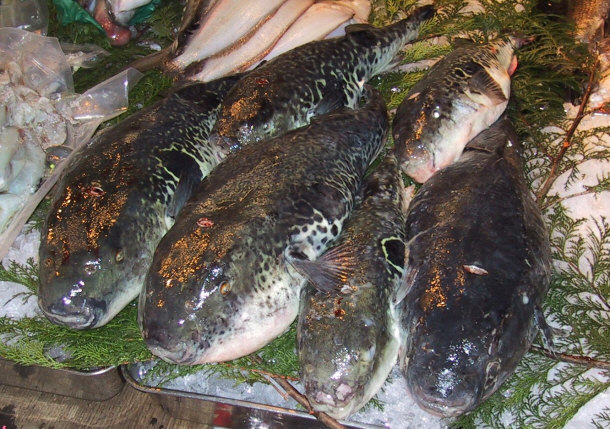
By Chris 73
via Wikimedia Commons
The Philippine Daily
Inquirer warns Philippine citizens against puffer fish altogether after the
deaths of several unsuspecting fishermen. Though the toxins are reportedly over
100 times more powerful than cyanide, many people enjoy eating the sashimi and
feeling the numbness in their mouths and on their lips. This is no doubt a
daring dish.
(Pufferfish) Fugu Sashimi:

By Suguri F
via Wikimedia Commons
Final Words
No matter where we go in the world, we will always find new and unfamiliar
things to try (or not try). Some unusual traditions were born out of necessity
but continued out of popularity. Others are just a matter of different tastes.
It is important to remember that both Westerners and Easterners have their
respective strange foods. Some foods only still thrive from popular tourist
demand. For example fried spiders and tequila worms, and others still remain a
favorite local dish much like the silkworm pupae. There are many more exotic
foods out there waiting to be tasted and enjoyed by locals and brave tourists
alike.
General Food
15 Little Known Facts About McDonald’s
15 Surprising Facts About the History of Fast Food
15 Fascinating Facts about Mushrooms
Top 10 Must-Try Foods of France
Top 15 Foods of the Future
15 Fascinating Facts in the World of Cheese
15 Little Known Facts in the World of Cotton Candy
15 Interesting Facts About Burgers
19 Ridiculous Food Challenges Around the World
15 Unusual Things People Around the World Eat
10 Enthralling Facts about the World of Gourmet |